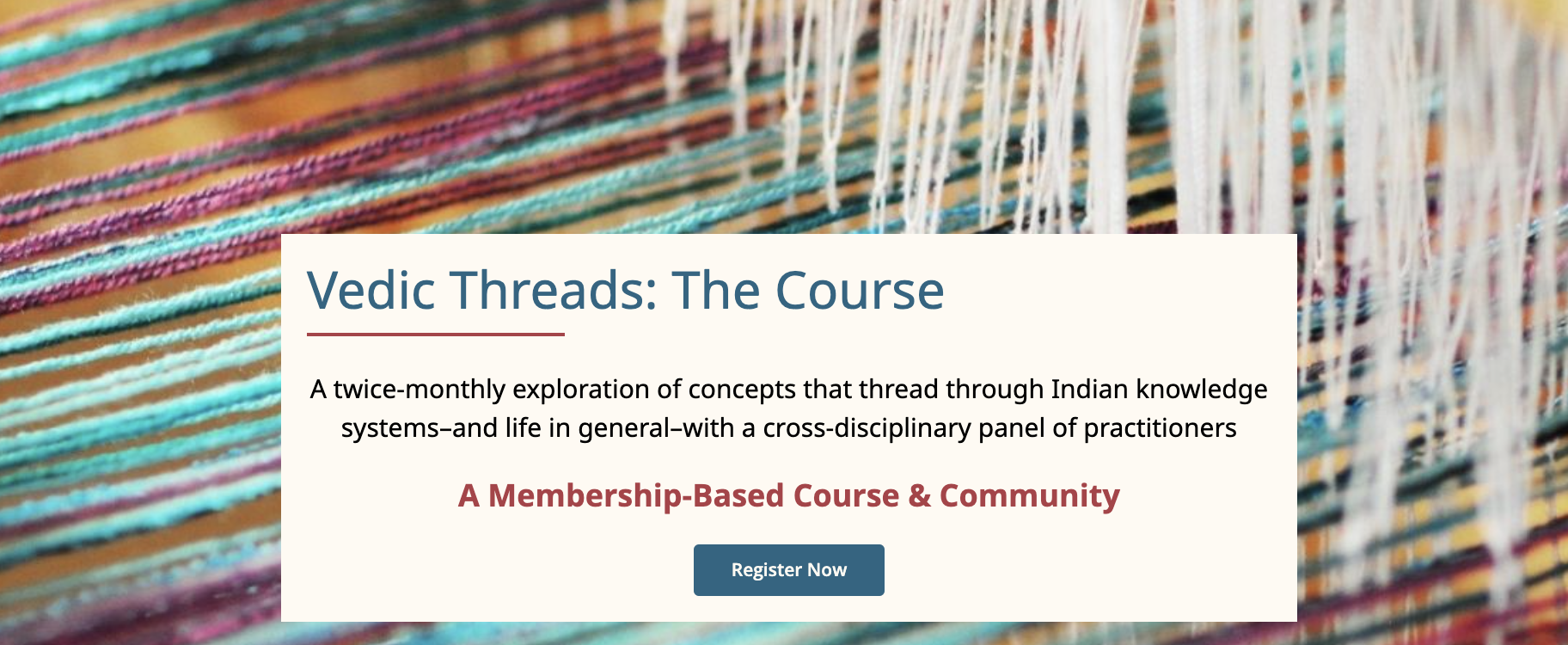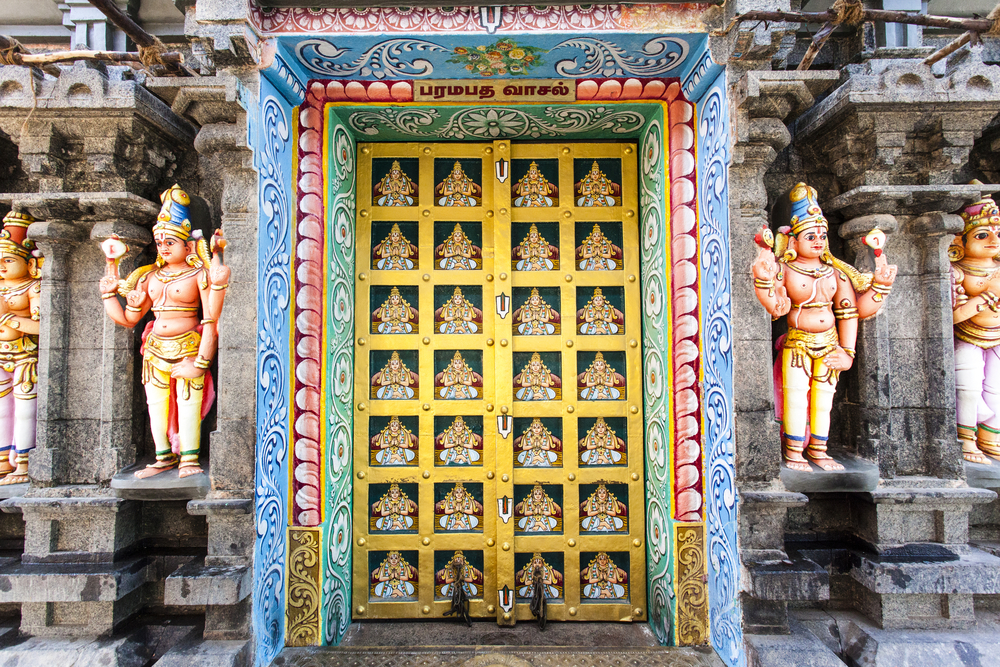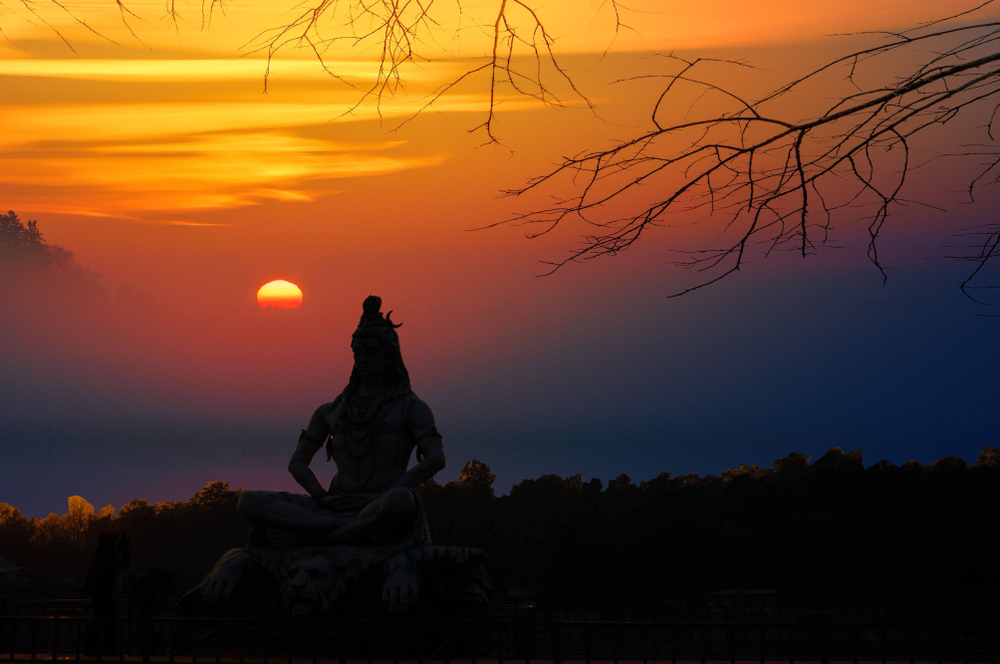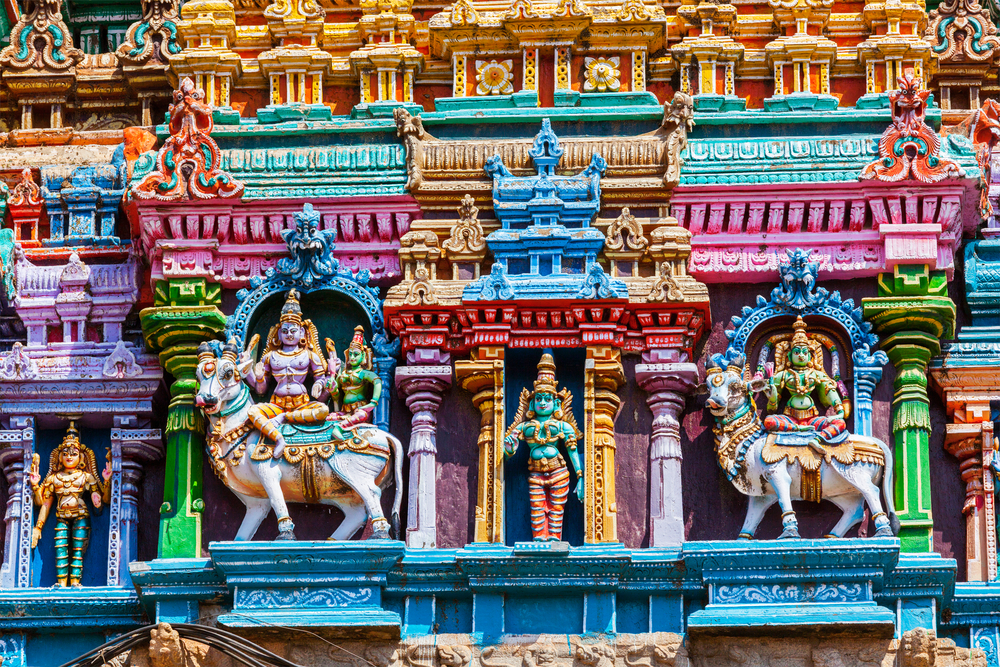Workshops
An intro to Bhagavad Gīta chanting – Free community event
Online on ZoomJoin me to celebrate Gīta Jayanti - a day to honour this magnificent text that unfolds the nature of our Self.
Rudram – an introduction
Online on ZoomLearning the Rudram is a serious commitment and tapas, requiring one to put forward their best effort during the learning process. In this free introduction, students will have an overview and will be able to learn the first few mantras of this magnificent hymn.
Mantra in Veda Chanting & Kirtan (with Shantala & Nina)
Online on ZoomShantala and Nina Rao are honoured to contribute to this series of sessions which are part of these valuable ongoing course offerings by Satsangam. This is a live event and you can participate in Q&A as well.
Gāyatrī prāṇāyāma – a workshop
Online on ZoomFor countless generations in India, this mantra of Ṛṣi Viśvāmitra is being repeated with an unquestioned faith in the sacred character of the origin and certainty of its efficacy. It forms one part of an elaborate daily practice of Hindus called Sandhyāvandanam.
Oṃ namaḥ śivāya – Friday community japa
Online on ZoomJoin us for a short practice to celebrate the monthly Śivarātri, a time dedicated to the worship of Lord Śiva. I will introduce you to the source of the famous Oṃ namaḥ śivāya mantra. We will then recite this pañcākṣari mantra (namaḥ śivāya) 108 times. I will explain the phonetics of this mantra as passed on to me by my teacher.
Rudram – an introduction
Online on ZoomLearning the Rudram is a serious commitment and tapas, requiring one to put forward their best effort during the learning process. In this free introduction, students will have an overview and will be able to learn the first few mantras of this magnificent hymn.
Practice practicalities – japa & pārāyaṇa
Online on ZoomSome of the key practices taught at Veda Studies include Japa (repetition of mantra), Pārāyaṇa (one time recitation of longer hymns), Upāsana (practices including saṅkalpa, prāṇāyāma, japa & contemplation).
- We are always receiving emails from students with questions like:
- How many times should I repeat my mantra? Does it have to be 108?
- How should I prepare for my practice? What are some basic protocols to follow?
- What direction should I face during my practice? ...
Śivamānasa pūja – Śivarātri workshop
Online on ZoomŚivamānasa pūja is the mental performance of all the steps of a Pūja traditionally performed physically at an altar, thereby, creating an inner altar through this process. Composed by Śrī Śaṅkarācārya, this chant teaches us how to do a pūja quite vividly in our mind.
Rudram – an introduction
Online on ZoomLearning the Rudram is a serious commitment and tapas, requiring one to put forward their best effort during the learning process. In this free introduction, students will have an overview and will be able to learn the first few mantras of this magnificent hymn.
Śivarātri community event – mantra japa
Online on ZoomŚivarātri is the 14th day of the waning moon fortnight (kṛṣṇa pakṣa), dedicated to prayer and austerities. The planetary positions on this day are considered to create an astrologically beneficial condition for spiritual pursuits. Our mantra practice hold immense potential on this day.
Practice practicalities – women, rṣikā-s, brahmavādini-s
Online on ZoomWhen our practices are aligned with a lineage, we receive clear instructions, allowing a distraction free sādhana to guide our lives. In the Veda, we know of many Ṛṣikā-s (women seers) as well as Brahmavādini-s (women teachers). Women practitioners are sometimes faced with these questions:
Are women allowed to chant Veda?
Women are not allowed to chant the Gāyatrī mantra, what is your advice on this?
What are the instructions for practice during menstruation?...
Liṅgāṣṭakam – Śiva as liṅga – a workshop
Online on ZoomLiṅgāṣṭakam is an octet (8 verses) offering salutations to Śiva in the form of Liṅga, the source of all creation. We praise Śiva the divine, as creator and creation, manifest and unmanifest, in the Liṅga.
Chanting in a lineage – an introduction
Online on ZoomJoin me for this introduction class and learn:
- What is Vedic chanting or more specifically chanting of Veda?
- Importance of learning in a lineage and in the context of tradition.
- The different types of chanting practices and how to distinguish between Vedic and other chanting.
- Illustrations through chanting of yoga sūtras, bhagavad gīta and Veda mantra examples.
Indica – Veda Studies chanting teacher training program – info session
Online on ZoomAfter successfully running our first Teacher Training program, with blessings from my Gurus, family and well-wishers, I am very happy to announce that we will start our second program for teachers in January 2024.
Practice practicalities – meditating on the meaning of mantras
Online on ZoomHow do we meditate on the meaning of mantras while chanting?
Vedic chanting is so difficult, I can't seem to chant & also reflect on the meaning at the same time.
During the silence between chants, what are we supposed to be thinking about?
Do I need to study Sanskrit to understand meaning?
How can I develop a prayerful life when I don't understand the chants?
What does it mean to live a prayerful or devotional life?












